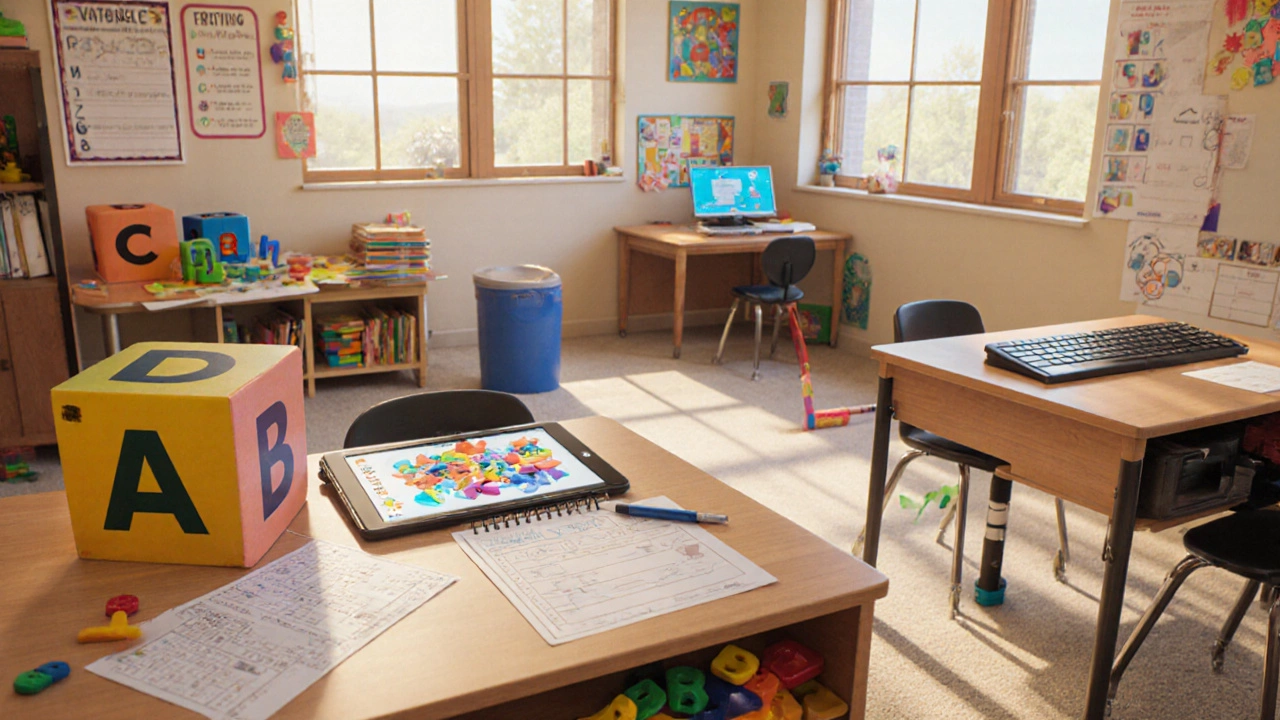Dyspraxia: Understanding, Supporting and Teaching
When working with Dyspraxia, a developmental coordination disorder that impacts motor planning, fine‑motor tasks and everyday organization. Also known as developmental coordination disorder, it often overlaps with ADHD, attention‑deficit/hyperactivity disorder, a condition influencing focus, impulse control and executive functioning and is discussed within inclusive language, the respectful terminology used when talking about neurodivergent learners. Knowing these links helps educators and parents choose tools that actually work.
Dyspraxia requires a blend of practical strategies and a supportive mindset. One key attribute is multisensory instruction: teaching a skill through sight, sound and touch simultaneously. For example, breaking a handwriting task into visual modeling, verbal cues and tactile feedback boosts confidence. Another attribute is structured routine. Clear, predictable schedules reduce the anxiety that often accompanies motor planning challenges. When a child knows exactly what’s coming next, they can focus energy on execution rather than guessing.
How Related Conditions Shape Support
Because many students with dyspraxia also experience ADHD, interventions must address attention alongside motor skills. Tools like timed visual timers keep focus while a learner practices a coordination drill. Likewise, sensory processing, how the brain interprets touch, sound and movement plays a role; a noisy classroom can overwhelm a dyspraxic child, so quiet corners or noise‑cancelling headphones become essential accessories. With inclusive language, teachers replace phrases like “slow learner” with “neurodivergent student,” which fosters a growth‑oriented classroom culture.
From a curriculum perspective, special needs education, the field dedicated to adapting lessons for diverse learners provides the framework for modifications. Differentiated worksheets, assistive technology such as voice‑to‑text apps, and peer‑buddy systems all stem from this discipline. The goal isn’t to lower standards but to give every learner the chance to demonstrate knowledge without being bottlenecked by motor challenges.
Parents often wonder how to translate school‑based strategies to home life. Simple home‑practice kits—like play‑dough for hand strength, puzzle boards for sequencing, and step‑by‑step chore charts—keep skills sharp in a low‑pressure environment. Consistency between school and home creates a seamless learning loop, letting children see progress in real time. Regular check‑ins with teachers ensure the same language and expectations travel across settings.
All these pieces—multisensory teaching, structured routines, ADHD‑aware tools, sensory‑friendly spaces and inclusive terminology—form a network that makes dyspraxia manageable rather than limiting. Below you’ll find a collection of articles that dig deeper into each of these areas, from classroom techniques to parent‑focused guides, giving you a practical toolbox to help any learner thrive.

Understanding the Four D's of Learning Disabilities: Dyslexia, Dysgraphia, Dyscalculia, Dyspraxia
- by Eliza Fairweather
- on 21 Oct 2025
Explore the four D's of learning disabilities-dyslexia, dysgraphia, dyscalculia, and dyspraxia. Learn their signs, causes, classroom strategies, and how to get proper support.
